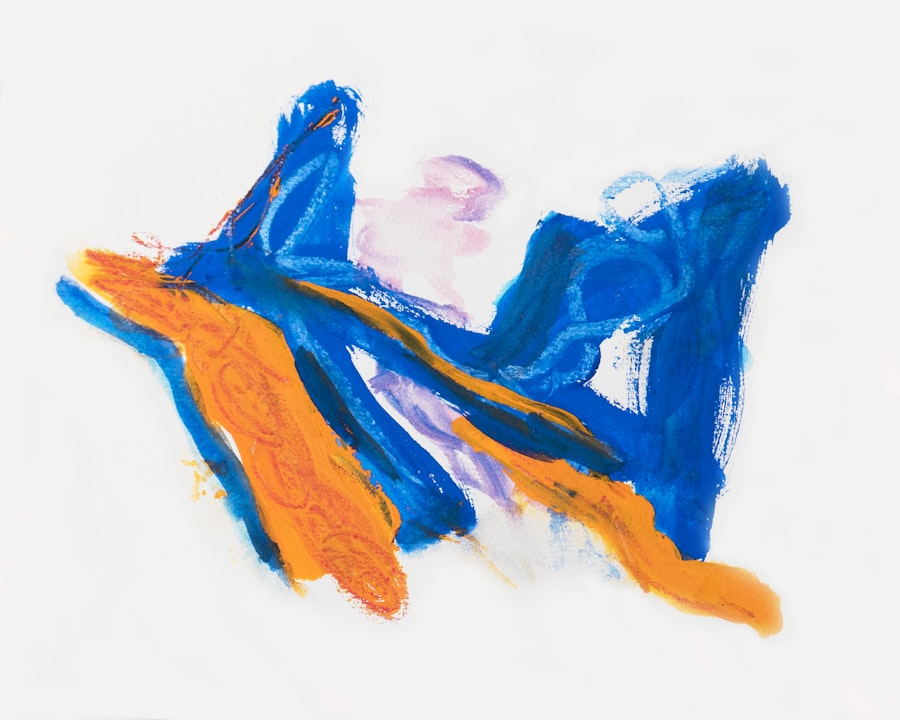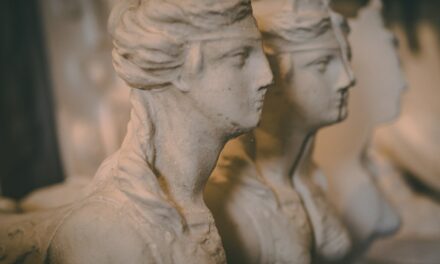Cubism, an art movement that emerged in the early 20th century, was pioneered by Pablo Picasso and Georges Braque. It represented a revolutionary departure from traditional artistic representation, seeking to depict the world in a novel and innovative manner. The movement was heavily influenced by the works of Paul Cézanne, who endeavoured to represent the natural world in a more abstract and geometric fashion.
The term “Cubism” was coined by art critic Louis Vauxcelles in 1908, after viewing a painting by Braque that featured fragmented forms and geometric shapes. Cubism was a response to the rapidly changing world of the early 20th century, with its technological advancements and shifting social structures. Artists sought to capture the essence of this new reality by deconstructing forms into geometric shapes and representing multiple viewpoints simultaneously.
This approach to art challenged traditional notions of perspective and representation, and it laid the groundwork for the development of abstract art in subsequent years. The movement was also influenced by African and Iberian art, as well as the rise of photography, which allowed artists to explore new ways of perceiving and representing the world around them.
Summary
- Cubism originated in the early 20th century in Paris, France, with artists Pablo Picasso and Georges Braque as the pioneers of the movement.
- The key characteristics of Cubism include the use of geometric shapes, multiple viewpoints, and the fragmentation of objects to depict them from different angles.
- Cubism had a significant impact on art and culture, challenging traditional artistic conventions and paving the way for abstract art and modernism.
- Leading figures of Cubism include Pablo Picasso, Georges Braque, Juan Gris, and Fernand Léger, who all made significant contributions to the movement.
- Cubism evolved from its early analytical phase to a more synthetic phase, incorporating collage and brighter colours, before eventually influencing other art movements such as Futurism and Constructivism.
- The legacy of Cubism can be seen in the continued influence on modern art and design, as well as its lasting impact on how we perceive and represent the world around us.
- To appreciate Cubist art, viewers should consider the multiple viewpoints and fragmented forms, as well as the use of geometric shapes and bold colours to convey a deeper understanding of the subject matter.
The Key Characteristics of Cubism
The Fragmentation of Form
One of the key characteristics of Cubism is its use of collage and mixed media. Artists incorporated elements such as newspaper clippings, fabric, and other materials into their work, blurring the lines between art and everyday life. This approach to art challenged traditional notions of what constituted a work of art, and it paved the way for the development of assemblage and other mixed media techniques in the years to come.
The Two-Dimensional Surface
Another important characteristic of Cubism is its emphasis on the two-dimensional surface of the canvas. Artists sought to flatten forms and break down space into geometric planes, creating a sense of depth and dimensionality through the use of line and colour. This approach to composition challenged traditional notions of pictorial space, and it laid the groundwork for the development of abstract art in the years to come.
Challenging Traditional Notions
Cubism’s innovative approach to representation and composition challenged traditional notions of art and paved the way for a wide range of avant-garde movements in the 20th century.
The Impact of Cubism on Art and Culture

Cubism had a profound impact on art and culture in the early 20th century, as it challenged traditional notions of representation and paved the way for the development of abstract art. The movement inspired artists across Europe and beyond, leading to the development of various offshoots and interpretations of Cubist principles. Cubism also had a significant impact on popular culture, influencing design, fashion, and architecture.
The movement’s emphasis on geometric forms and fragmented compositions found its way into everyday objects and spaces, as designers sought to capture the essence of modernity through their work. This influence can be seen in everything from furniture design to graphic design, as Cubism’s principles permeated all aspects of visual culture. In addition to its impact on art and design, Cubism also had a lasting influence on the way we perceive and understand the world around us.
The movement’s emphasis on multiple viewpoints and fragmented forms challenged traditional notions of perspective, leading to a more nuanced understanding of space and time. This approach to representation has had a lasting impact on fields such as psychology and philosophy, as it has forced us to reconsider our relationship to the world around us.
The Leading Figures of Cubism
Pablo Picasso and Georges Braque are widely regarded as the leading figures of Cubism, as they were instrumental in developing and popularising the movement. Picasso’s groundbreaking work “Les Demoiselles d’Avignon” (1907) is often cited as one of the first Cubist paintings, as it features fragmented forms and multiple viewpoints. Braque, on the other hand, is known for his development of Analytical Cubism, which sought to break down forms into their basic geometric components.
Other important figures in the development of Cubism include Juan Gris, Fernand Léger, and Robert Delaunay. Gris was known for his use of collage and mixed media, while Léger’s work focused on the mechanisation of modern life. Delaunay, on the other hand, was known for his use of vibrant colour and dynamic compositions.
These artists were instrumental in developing and popularising Cubism, as they sought to capture the essence of modernity through their work. Their innovative approach to representation challenged traditional notions of perspective and paved the way for the development of abstract art in the years to come.
The Evolution of Cubism
Cubism underwent several phases of development throughout its history, each marked by different approaches to representation and composition. The movement began with Analytical Cubism, which sought to break down forms into their basic geometric components and represent objects from multiple viewpoints simultaneously. This phase was characterised by muted colours and fragmented compositions, as artists sought to capture the essence of an object rather than its physical appearance.
This phase was followed by Synthetic Cubism, which sought to incorporate elements such as collage and mixed media into the work. Artists began to incorporate everyday materials into their paintings, blurring the lines between art and everyday life. This phase was characterised by vibrant colours and dynamic compositions, as artists sought to capture the essence of modernity through their work.
In addition to these phases, Cubism also underwent various offshoots and interpretations throughout its history. Artists across Europe and beyond were inspired by Cubist principles, leading to the development of movements such as Orphism, Futurism, and Suprematism. These movements sought to build upon Cubism’s principles and develop new approaches to representation and composition.
The Legacy of Cubism

The Impact on Art and Design
This approach to representation has had a lasting impact on fields such as psychology and philosophy, as it has forced us to reconsider our relationship to the world around us. Cubism’s influence can also be seen in contemporary art practices, as artists continue to build upon its principles and develop new approaches to representation and composition.
A Lasting Influence on Popular Culture
The movement’s emphasis on collage and mixed media has found its way into all aspects of visual culture, from graphic design to fashion and architecture. In addition to its impact on art and design, Cubism also had a lasting influence on popular culture, influencing everything from furniture design to graphic design.
Everyday Objects and Spaces
The movement’s emphasis on geometric forms and fragmented compositions found its way into everyday objects and spaces, as designers sought to capture the essence of modernity through their work.
How to Appreciate Cubist Art
To appreciate Cubist art, it is important to understand its historical context and the principles that underpin it. Cubism emerged in response to the rapidly changing world of the early 20th century, with its technological advancements and shifting social structures. Artists sought to capture the essence of this new reality by breaking down forms into geometric shapes and representing multiple viewpoints simultaneously.
When looking at a Cubist artwork, it is important to consider how the artist has broken down forms into their basic geometric components. Pay attention to how objects are represented from multiple viewpoints simultaneously, challenging traditional notions of perspective and depth. It is also important to consider how the artist has used colour and composition to create a sense of depth and dimensionality within a two-dimensional space.
Pay attention to how lines intersect and planes overlap, creating a sense of movement and dynamism within the composition. Finally, it is important to consider how the artist has incorporated elements such as collage and mixed media into their work. Pay attention to how everyday materials have been incorporated into the painting, blurring the lines between art and everyday life.
By considering these aspects of a Cubist artwork, one can gain a deeper appreciation for the movement’s innovative approach to representation and composition.
If you are interested in learning more about different art movements, you may also want to check out this article on Impressionism. Impressionism was a revolutionary art movement that emerged in the late 19th century, and it had a significant impact on the development of Cubism. Understanding the context and influences of Impressionism can provide valuable insights into the evolution of Cubist art.
FAQs
What is Cubism?
Cubism is an art movement that emerged in the early 20th century, pioneered by artists Pablo Picasso and Georges Braque. It is characterized by the use of geometric shapes, fragmented forms, and a flattened perspective to depict the subject matter.
What are the key characteristics of Cubism?
The key characteristics of Cubism include the use of geometric shapes, multiple viewpoints, fragmented forms, and a flattened perspective. Artists often depicted objects from multiple angles within the same composition, challenging traditional notions of representation in art.
Who were the key figures in the development of Cubism?
Pablo Picasso and Georges Braque are considered the key figures in the development of Cubism. They worked closely together during the early stages of the movement, developing and refining the style.
How did Cubism influence the art world?
Cubism had a significant impact on the art world, challenging traditional artistic conventions and paving the way for the development of abstract art. It also influenced other movements such as Futurism, Constructivism, and Dadaism.
What are the different phases of Cubism?
Cubism is often divided into two main phases: Analytical Cubism and Synthetic Cubism. Analytical Cubism, developed in the early 1900s, focused on breaking down forms into geometric shapes and analyzing the subject matter from multiple viewpoints. Synthetic Cubism, which emerged later, involved the use of collage and incorporating real-life objects into the artwork.
What is the legacy of Cubism in the art world?
Cubism’s legacy in the art world is far-reaching. It revolutionized the way artists approached representation and perspective, and its influence can be seen in various art movements and styles that followed. Cubism also laid the groundwork for the development of abstract art and continues to inspire artists to this day.




